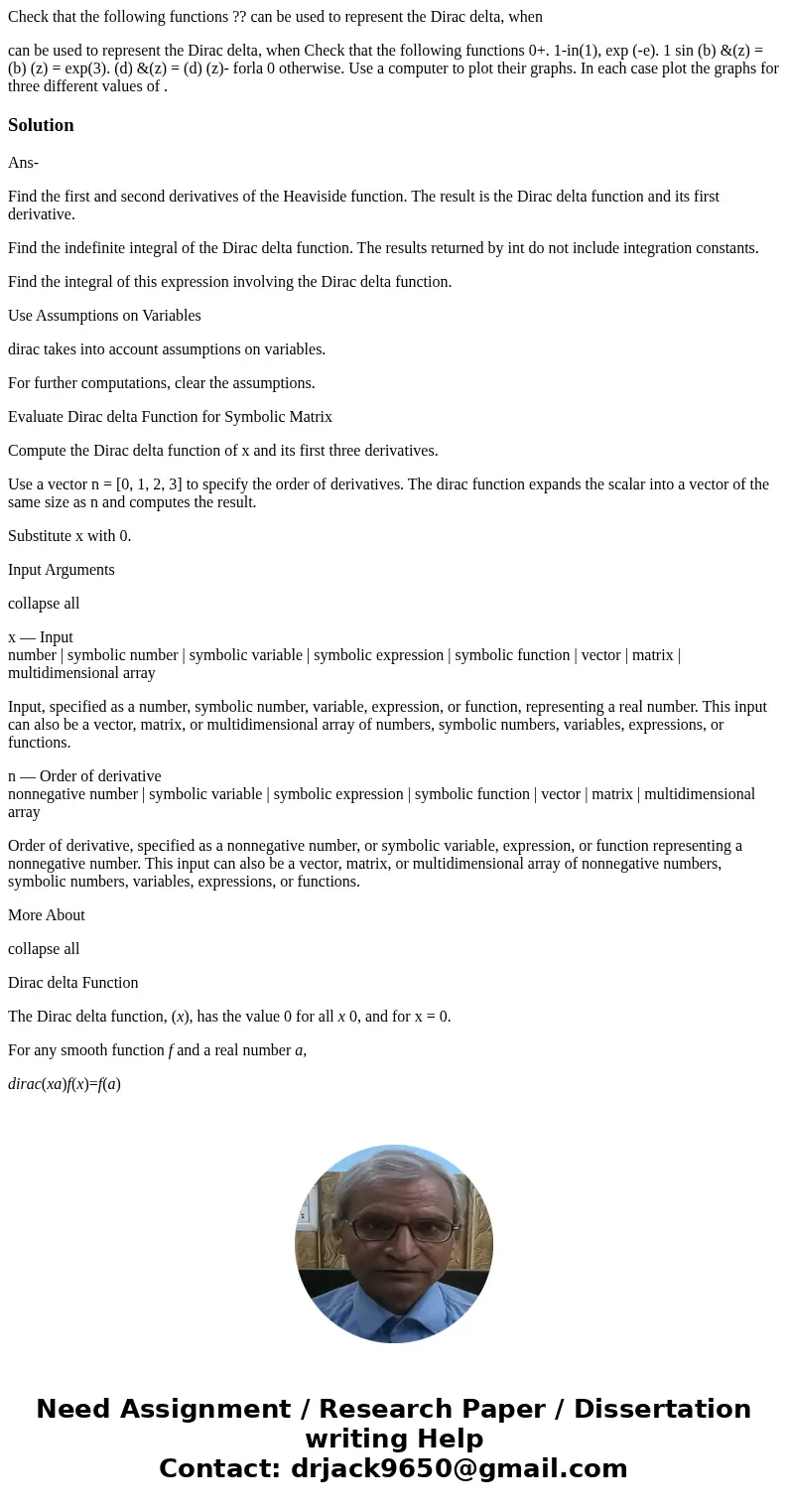Check that the following functions can be used to represent
Check that the following functions ?? can be used to represent the Dirac delta, when
can be used to represent the Dirac delta, when Check that the following functions 0+. 1-in(1), exp (-e). 1 sin (b) &(z) = (b) (z) = exp(3). (d) &(z) = (d) (z)- forla 0 otherwise. Use a computer to plot their graphs. In each case plot the graphs for three different values of .Solution
Ans-
Find the first and second derivatives of the Heaviside function. The result is the Dirac delta function and its first derivative.
Find the indefinite integral of the Dirac delta function. The results returned by int do not include integration constants.
Find the integral of this expression involving the Dirac delta function.
Use Assumptions on Variables
dirac takes into account assumptions on variables.
For further computations, clear the assumptions.
Evaluate Dirac delta Function for Symbolic Matrix
Compute the Dirac delta function of x and its first three derivatives.
Use a vector n = [0, 1, 2, 3] to specify the order of derivatives. The dirac function expands the scalar into a vector of the same size as n and computes the result.
Substitute x with 0.
Input Arguments
collapse all
x — Input
number | symbolic number | symbolic variable | symbolic expression | symbolic function | vector | matrix | multidimensional array
Input, specified as a number, symbolic number, variable, expression, or function, representing a real number. This input can also be a vector, matrix, or multidimensional array of numbers, symbolic numbers, variables, expressions, or functions.
n — Order of derivative
nonnegative number | symbolic variable | symbolic expression | symbolic function | vector | matrix | multidimensional array
Order of derivative, specified as a nonnegative number, or symbolic variable, expression, or function representing a nonnegative number. This input can also be a vector, matrix, or multidimensional array of nonnegative numbers, symbolic numbers, variables, expressions, or functions.
More About
collapse all
Dirac delta Function
The Dirac delta function, (x), has the value 0 for all x 0, and for x = 0.
For any smooth function f and a real number a,
dirac(xa)f(x)=f(a)

 Homework Sourse
Homework Sourse